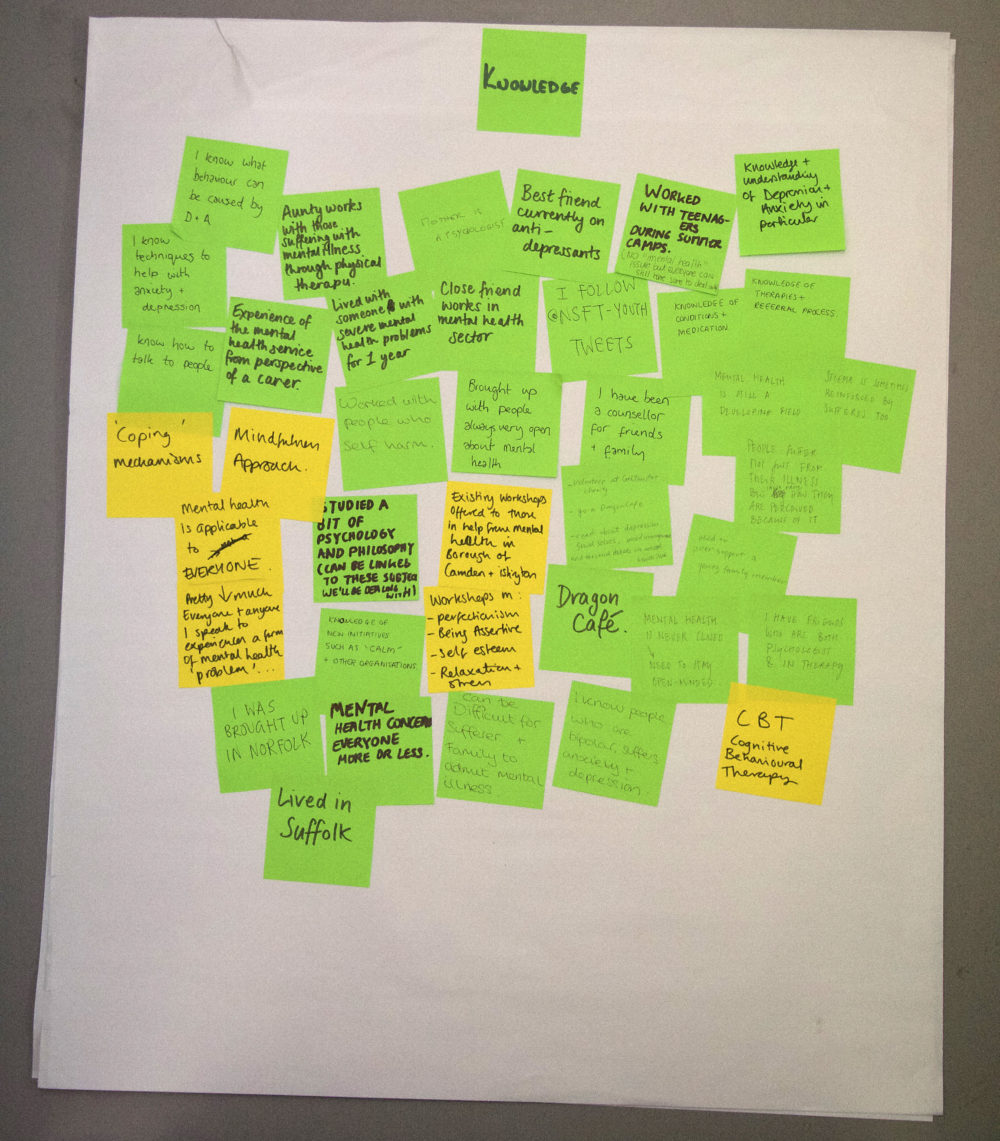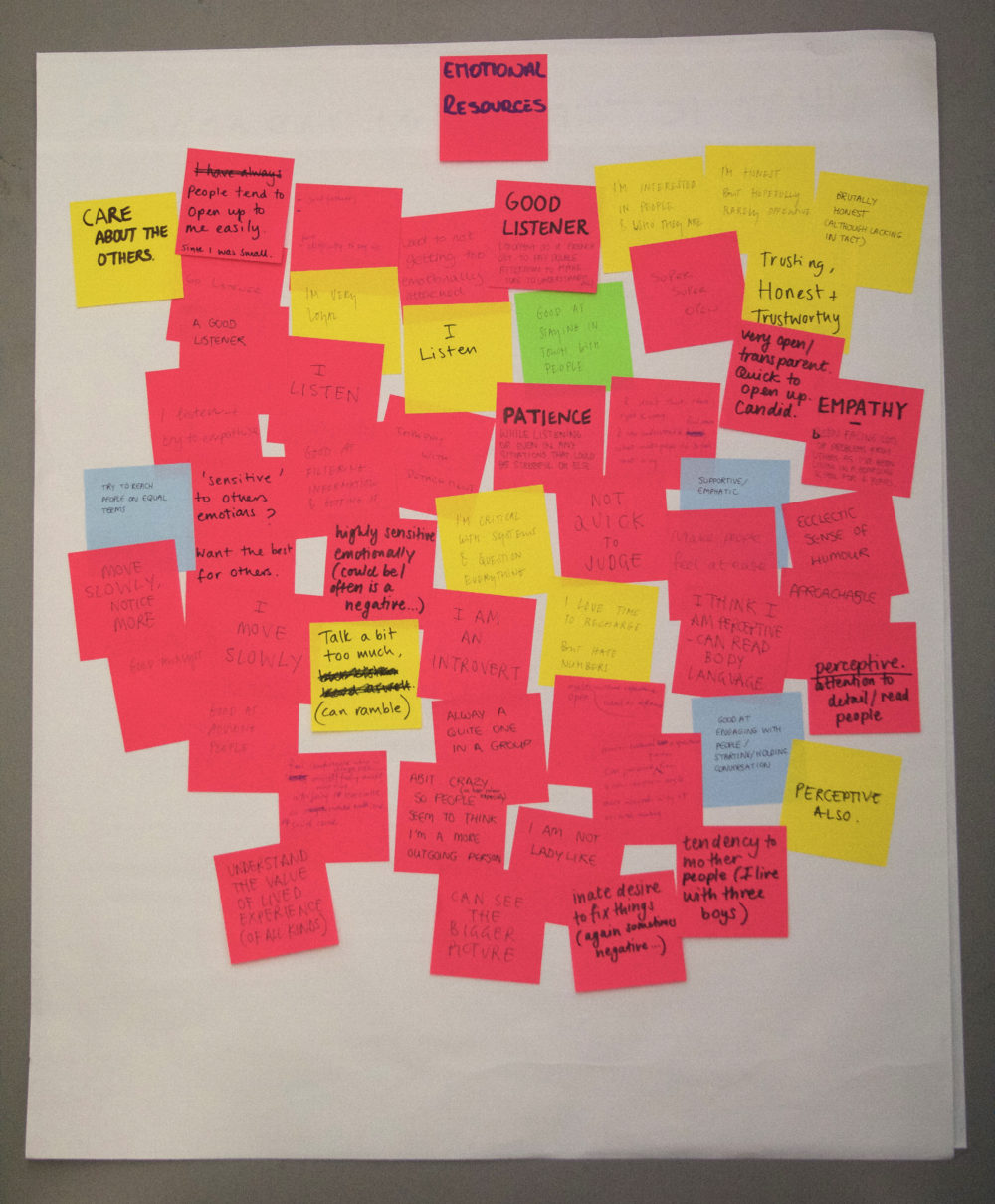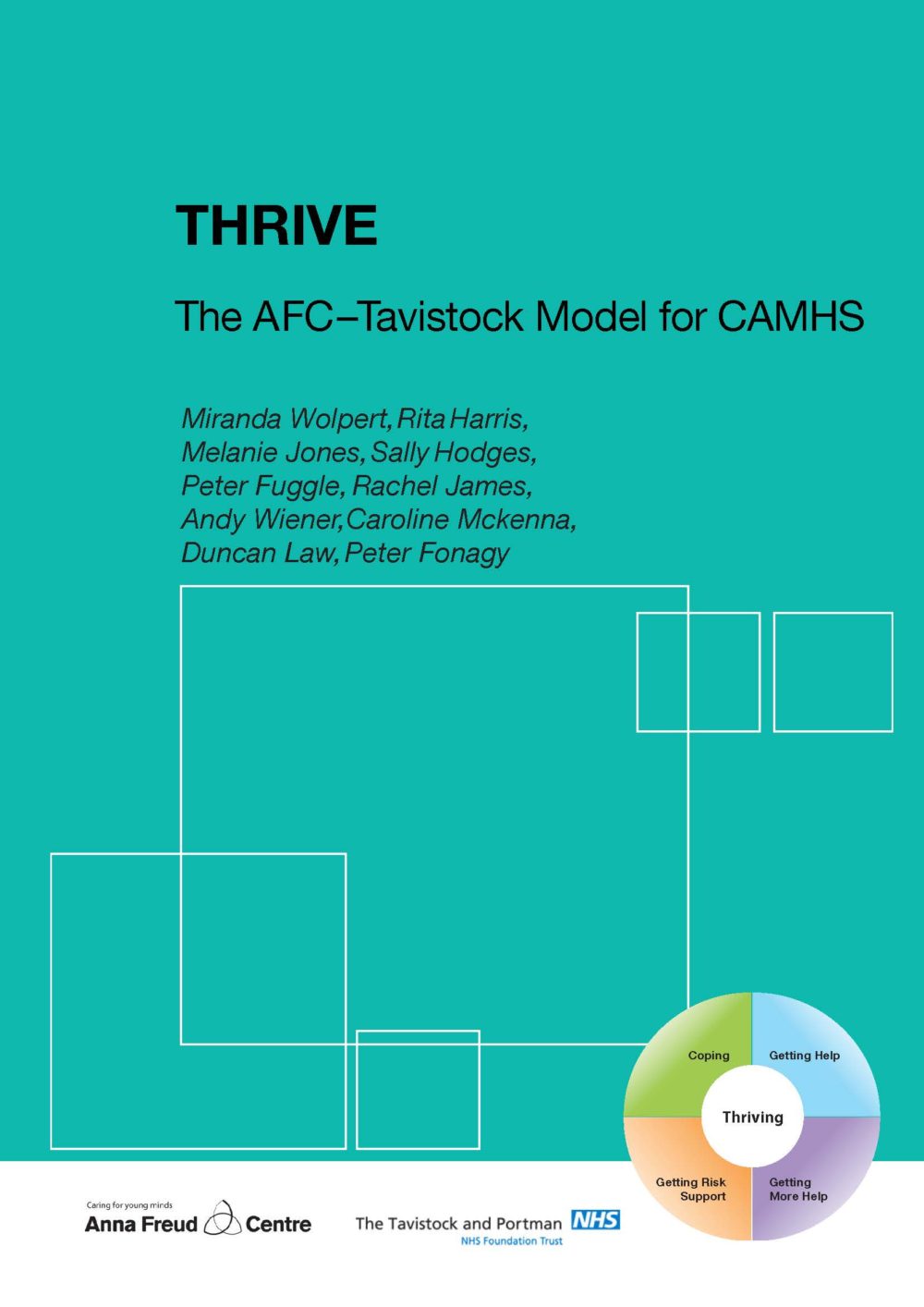The UAL student team prepares for the field trip: youth mental health with NSFT
Early Lab has three weeks to prepare its new student team for the Norfolk field trip. Over three sessions, the team get to know each other, understand the field trip objectives, its scope, the resources they can bring to it, learn how to listen and ask questions better, develop their workshop plans and assign team roles. The team familiarises itself with recent NHS reports and work by others including Adam Thorpe/Lorraine Gamman, Joachim Halse, Lucy Kimbell and Sarah Schulman.
March 2015 – Early Lab team preparation revealing field trip objectives, key references and influences.
Introduction
Together with the symposium they attended a couple of weeks before, the three preparation sessions are all about building a sense of anticipation in the student team for participating in the project. Early Lab’s aim is to support each student’s sense of their own currency in the setting of this project. This is achieved by equipping each one of them with the tools, knowledge and awareness to enable them to work alongside each other, the Early Lab founders, the NSFT service users (their Youth Council) and alongside service providers (a mix of NSFT clinicians, local GPs, local authority representatives and leaders from local voluntary organisations).
Ice-breaker
The first session began with an ice-breaker, a tame peripatetic exercise involving observation to enable the students to find stuff out about each other. It was some innocent fun that for greater authenticity was performed during a refreshment break in the official timetabled events printed on the agenda for the session.
Fabiane gave each team member a piece of paper with an instruction to follow they could not reveal. Each instruction contained a hidden agenda to be performed secretly by concealment through commonly accepted social behaviour as they moved and chatted amongst each other. Walking, discussing, listening and learning is an essential part of the peripatetic learning methodology.
So, each participant was performing a secret agenda: posing questions, being alert to certain nuggets of information whilst being sociable and friendly. The hidden agendas were:
- count the number of brown-eyed people in the room
- find out who has made the longest journey here
- who is wearing the most tactile attire tonight?
- how many participants play a musical instrument?
- find out who wears the biggest and smallest shoe in the team
- find out who owns the most unusual pet. What animal is it?
- count how many times the word problem is said tonight
- how many languages does the team speak and which ones?
- how many team members have been to Norwich before?
This was a fun activity that got everyone speaking to each other and enabled shared reflection on social dynamics once all agendas were revealed.
What Early Lab is trying to do
Nick and Fabiane led a discussion with the students to clarify the objectives of the field trip. What is it that Early Lab is trying to do? The following objectives were discussed:
- open exchanges (information/skills) and keep them going long enough
- find stuff out through first-hand experience; the team’s and that of the service users/providers
- look for gaps in the system, in service provision and understand the human cost of them
- make information visible and physical
- treat recipients (service users) as participants (active agents)
The team also asked themselves what these objectives and this way of working says about Early Lab. What is Early Lab about?
- its about investigating other ways of working
- its about different ways of working with big institutions
- its about encouraging project partners to question the traditional role of the designer
- its about asking questions (not providing answers)
- its about the design process participating early in the decision-making process
- its about being in the place with people
- its about the root (not symptoms), about preventative action
- its about design as R&D, its about reframing
But also, what is Early Lab not about?
- its not about fixing things and increasing the efficiency of current operations
- its not about problem-solving or problem finding
- its not about facilitating (team members participate, take part)
Project scope and mapping the team resource for it
A group exercise then followed to help the students grasp the scope of the project through drawing a map of participating actors to help them see the whole picture. In response to this, the team was then asked to visualise what it is they can each bring to this ‘landscape’ in terms of skills, knowledge, aptitude, experience and personal insight. In preparing these sessions some of Lucy Kimbell’s methods from her publication The Service Innovation Handbook were referenced.





Listening exercise
For this, an exercise in the use of open and closed questions, the team was split into five pairs. Each team member was given a picture of a dwelling which for the purpose of the exercise was to be treated as their home and hidden from their team partner. Using open and closed questions team members have to find out what type of home their partner has. The dwelling pictures handed out included an igloo, the Disney castle, a favela, a posh modern tower block and a canal barge.
Closed questions can be answered with either a single word or short reply. Whereas open questions deliberately seek longer replies.
Closed questions get bad press but they are particularly useful if you are wanting to make it easier for the other person or wanting to test their or your understanding.
Open questions are good for getting the respondent to think and reflect, get you opinions and feelings while handing control over to them. This can be intimidating for the respondent so various sentence beginnings were discussed that could soften the abrupt directness of a why question.
Fabiane talked through how closed and open questions might be used appropriately with some examples. She suggested that when opening conversations it can be good to alternate between two to three closed questions and one open question. The team were then encouraged to put what they had just learned to use in the what-kinda-home activity.
Assigning roles and tasks
It was important that the Early Lab team were aware of the rotating roles and tasks involved during the field trip and understood how to work together in the most complementary way.
Workshops
In each service user workshop group, there would always be two Early Lab students with two members of the NSFT Youth Council.
In each service provider workshop group, there would always be one Early Lab student with three or four service providers.
Documenters
During all workshops, one Early Lab student would be responsible for photographing and filming the events as they happen.
On the last day of workshops it was arranged that documentary filmmaker and LCC alum Gareth Johnson would come up to Norwich to conduct filmed interviews with all participants.
Narrative wall
It was decided to designate one wall in the workshop studio on which to visually tell the story of events. One Early Lab student was responsible for printing out photos of the previous session and sticking them on the wall to gradually build the narrative. This would enable all participants to know what is going on in the workshops they are not involved in.
Food
Early Lab considers food and the shared social experience of it at break times to be an essential component of a successful workshop event. Two Early Lab students volunteered themselves enthusiastically to be responsible for creating the right atmosphere for when participants come together for refreshment at break and lunch times.
Communication
One Early Lab student, for the whole week, would act as the main point of information: they would text everyone to say thanks for participating at the end of each day and would provide a briefing on the next day’s activity.
Social
Two students would be responsible for deciding and arranging where the Early Lab team will go at the end of each working day. The team was warned to expect each day’s activities to be intense and consequently exhausting. Therefore, having an escape (pub, bar, club, restaurant etc.) where everyone can reflect and unwind was considered important for wellbeing.
Videos: work by others referenced during preparation
Above. During their preparation for the field trip, the Early Lab student team reviewed the immersive on-the-ground methods used by Sarah Schulman of social enterprise In With Forward. Here she is giving a talk about her work at Parsons Desis Lab in 2014.
Above. In preparation for the field trip, the Early Lab student team watched this video of Lucy Kimbell’s talk Design’s New Publics made at Central Saint Martins in 2012. In it Kimbell questions the emphasis on empathy in the field of design for social innovation. She calls for designers to be more honest and ‘attend more precisely to difference’. Kimbell says that empathy is ‘a dream’ that ‘we can’t realise’.
Articles: work by others referenced during preparation
Design with society: why socially responsive design is good enough by Adam Thorpe and Lorraine Gamman (of Design Against Crime Research Centre at Central Saint Martins, UAL). Published in CoDesign journal, Nov 2011.
The collaborative processes and equitable engagement methodologies of socially responsive (rather than responsible) design that effectuate change. “Equitable arrangements between stakeholders are essential to ensure the successful delivery of design for social change”. An asset-based as opposed to needs-based approach. Includes the five principles of effectuation by Saras Sarasvathy.
Tools for Ideation: Evocative Visualisation and Playful Modelling as Drivers of the Policy Process by Joachim Halse. Published in ‘Design for Policy‘ edited by Christian Bason, 2014, Gower Publishing.
When confronted with complex and abstract issues in policy work, design tools can work to make these issues experientially available through images and physical models. “It is important that evocative sketches are not too definitive, yet they have to be suggestive enough of something concrete to get people started imagining. The motives have to be recognisable as concrete features or situations, yet estranged enough that they convey a sense of one or more alternative options. Stylistically the evocative sketch balances the fine line between too unattractive roughness and too persuasive beauty.”
Early Lab thanks Lorraine Gamman for drawing its attention to these articles.
NHS documents referenced during preparation
Above: Future in Mind, one of six documents produced by the UK coalition government’s mental health Taskforce published by NHS England in March 2015. “We need a whole child and whole family approach, where we are promoting good mental health from the earliest ages.” – Norman Lamb, Minister of State for Care and Support.
Above: NSFT brought to Early Lab’s attention a new model for CAMHS (Children and Adolescent Mental Health Services) called THRIVE to replace a tiered approach that they are keen on (see above). Page 8, Coping: “There is an increased interest in the promotion of resilience, to build the ability of a community (school/family) to prevent, support and intervene successfully in mental health issues.”



